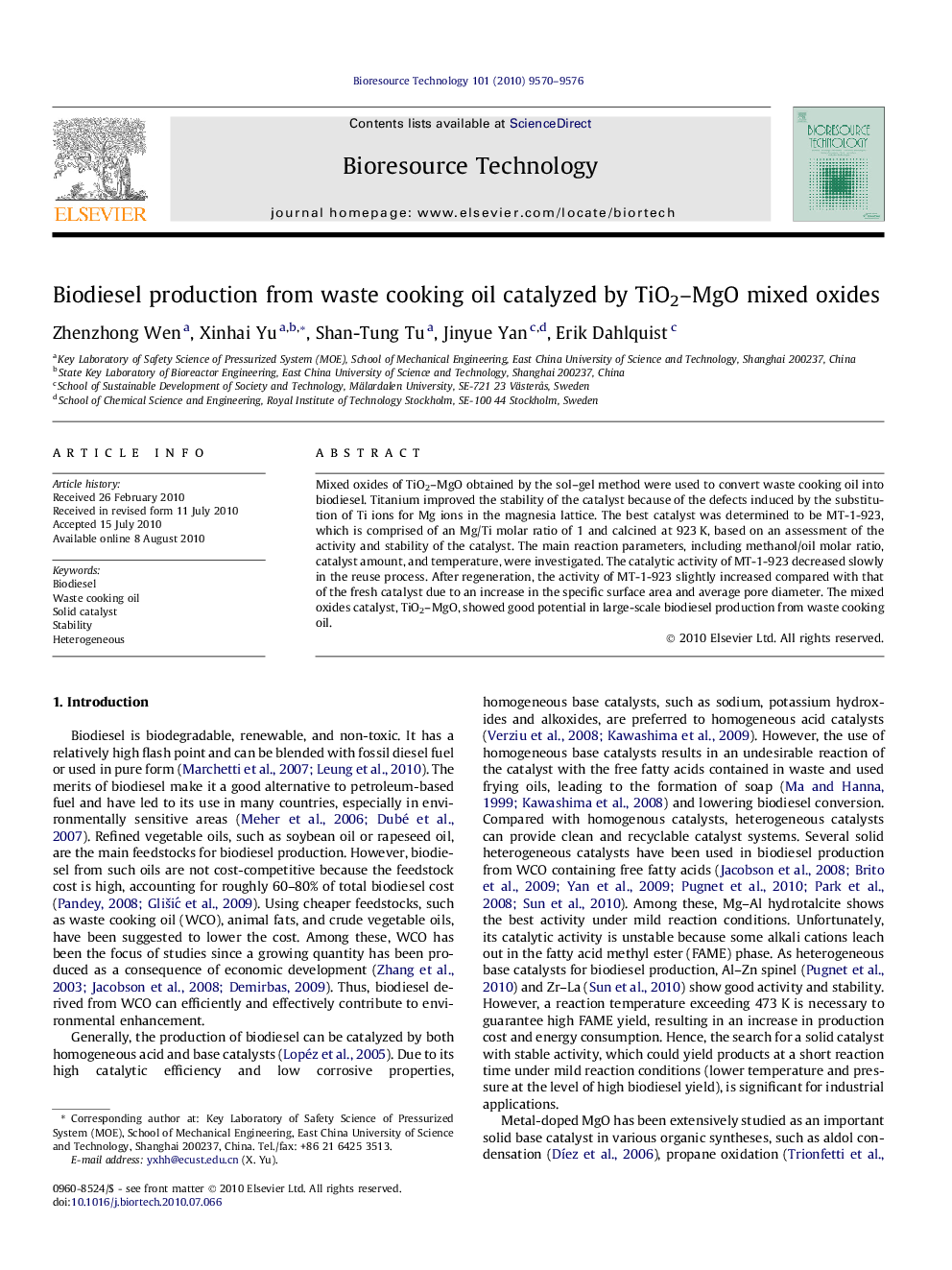| Article ID | Journal | Published Year | Pages | File Type |
|---|---|---|---|---|
| 682430 | Bioresource Technology | 2010 | 7 Pages |
Mixed oxides of TiO2–MgO obtained by the sol–gel method were used to convert waste cooking oil into biodiesel. Titanium improved the stability of the catalyst because of the defects induced by the substitution of Ti ions for Mg ions in the magnesia lattice. The best catalyst was determined to be MT-1-923, which is comprised of an Mg/Ti molar ratio of 1 and calcined at 923 K, based on an assessment of the activity and stability of the catalyst. The main reaction parameters, including methanol/oil molar ratio, catalyst amount, and temperature, were investigated. The catalytic activity of MT-1-923 decreased slowly in the reuse process. After regeneration, the activity of MT-1-923 slightly increased compared with that of the fresh catalyst due to an increase in the specific surface area and average pore diameter. The mixed oxides catalyst, TiO2–MgO, showed good potential in large-scale biodiesel production from waste cooking oil.
